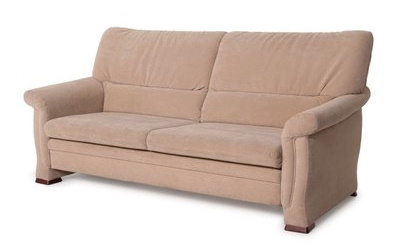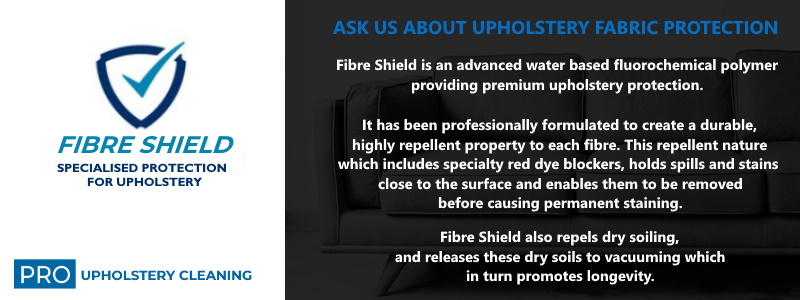Microfiber Upholstery
For anyone looking for the right upholstery fabric, it can be a problem. There are so many fabric options available, and it's easy to get confused about which one is best for you. Microfiber upholstery has a lot of benefits and could be the best option for you. It has a lot of good traits and is considered to be quite durable and can come in a variety of different colour options as well.
So what is microfiber? Well, microfiber is a synthetic fiber that is finer than one denier, which is a unit of measurement for the linear mass density of fibers, and the mass in grams per 9000 metres of the fibre. One strand of silk is close to one denier, and microfiber is thinner than a strand of silk!
In the upholstery world, microfiber will most commonly be made from polyester, and can also contain combinations of nylon and polypropylene.
Ultrafine fiber production dates back as early as the 1950s. Typically, the process would involve techniques called flash spinning and melt-blown spinning. But the results were not always great and quite random. Only a few lengths were manufactured, and the application of those ultra-fine fibers was few. But the experiments kept continuing.
The big breakthrough came in the 1960s. Dr. Miyoshi Okamoto from Japan successfully produced filament-like ultra-fine fibers, marking the beginning of microfiber use in industrial applications. In the 1970s, Ultrasuede entered the market and became the most successful microfiber product.
The Ultrasuede fabric was treated as an excellent substitute for suede leather. Ever since then, the use of microfiber in the textile industry has expanded. If you ever see an upholstered furnishing that says microsuede or macrosuede, it’s actually polyester and it’s not real suede.

How is Microfiber Upholstery Made?
Generally, two types of synthetic materials are used to produce microfiber. For example, a polyamide and polyester can be mixed in the ratio of 80:20 to obtain microfiber. As long as the primary resources are synthetic fiber material, the percentage of the mixture varies, and microfiber can be produced depending on the desired fabric requirements.
Typically, polyamide and polyester pellets are melted in separate vats. After that, the liquid polyamides and polyester vats are pushed into jet mouldings. There are also traces of oil to prevent the two from mixing. During the process, the liquid polymers are cooled when the air passes through the moulding, which solidifies the polymers into fibers. Finally, with the help of gravity, the filaments flow continuously downwards and are collected.

Characteristics
Microfiber is an excellent upholstery material. It has a lot of ideal characteristics. In general, microfiber fabrics are lightweight, retain shape, are breathable, wrinkle-free, drape well, and resist pilling. Microfiber is also an excellent insulator, so it works perfectly on furniture.
Microfiber retains colour better than other fabrics, but it’s still prone to fading from UV exposure, so be careful if your upholstery is near a window that gets strong sunlight. It’s also fantastic because the maintenance of microfiber fabric is easy. It will look dirty and grimy after a while, but the good news is that this material cleans up extremely well when you use professional upholstery cleaners.
However, it's worth mentioning that microfiber is not completely water-resistant. For instance, it can leave behind very visible watermarks and outlines from where liquid has been. So if you don't clean stains and leave them for long periods, you will have more significant problems trying to get them out.
Another concern people have about microfiber is that things like hair, dust, and other particles stick quite easily, but this can be avoided with regular vacuuming. Microfiber fabric for upholstery has its pros and cons. Nonetheless, it's still an excellent fabric and with regular vacuuming and annual professional cleaning, it can last for a very long time and even handle high levels of exposure from kids and animals.
Popular Uses
Microfiber has many uses and spans different industries. It's a very versatile fibre. You can use it for automobiles, boats, caravans, and around the home or workplace. The most common use of this fabric is on furniture such as lounges, sofas, foot rests, stools, chairs, couches, and bed heads.
Despite a few shortcomings, microfiber is resilient and more durable than most fabrics. So if you’re planning on getting some new furniture and are undecisive on which fabric to get, microfiber is an excellent choice and is highly recommended for a variety of settings and it can withstand the exposure of everyday use.
The Best Microfiber Upholstery
Cleaning Service You Will Ever Try.

